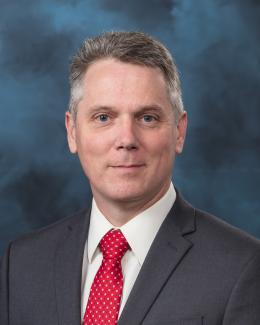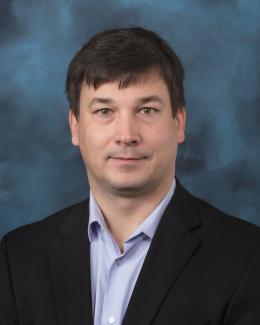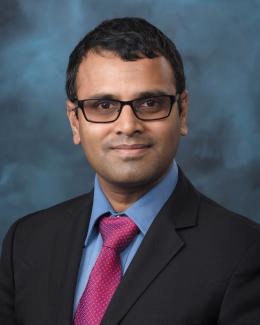The students analyzed diatom images like this one to compare wild and genetically modified strains of these organisms. Credit: Alison Pawlicki/Oak Ridge National Laboratory, US Department of Energy.
Students often participate in internships and receive formal training in their chosen career fields during college, but some pursue professional development opportunities even earlier.
Now freshmen in college, Katherine Hausladen and Paulina Urbanowicz spent the summer between their junior and senior years of high school at the US Department of Energy’s (DOE’s) Oak Ridge National Laboratory (ORNL) through the Oak Ridge High School (ORHS) Math Thesis program led by ORHS math teachers Jessica Williams and Deanna Pickel.
Under the mentorship of Chad Steed, director of the ORNL Visual Informatics for Science and Technology Advances Laboratory, the students learned how to use the Python programming language for image processing applications. They used their skills to contribute to an ongoing research project in collaboration with Alex Belianinov, an R&D staff scientist at ORNL’s Center for Nanophase Materials Sciences (CNMS), a DOE Office of Science User Facility.
Specifically, the students analyzed images of diatoms—cylindrical, unicellular algae that produce porous, stable silicon for constructing cell walls—to determine the differences between wild and genetically modified strains of these organisms. Finding these distinctions was instrumental to a team of biologists, materials scientists, and computational scientists who are interested in optimizing diatoms for biomineralization, which is the process of making solid materials from biological systems.
Biomineralization provides a cheaper, environmentally friendly alternative to traditional materials synthesis methods, which often require costly, specialized environments that regulate temperature, pressure, and other conditions. Both students are coauthors on the team’s paper published in npj Computational Materials.
“The most exciting thing was being able to work on a real-world problem that scientists are trying to solve instead of some theoretical project,” Hausladen said.
To produce the modified diatom structures, ORNL researchers used a technique called gene knockdown, which reduces the expression of a targeted gene or sequence of genes. Eventually, they plan to intentionally mutate the diatoms for industrial applications, such as photonics, drug delivery, and water filtration systems that could extract precious metals from seawater. Additionally, they anticipate that certain structural changes could cause diatoms to produce other useful elements like tungsten or germanium.
“Nature is so much better than we are in terms of nanostructuring,” CNMS scientist Olga Ovchinnikova said. “If we can control the structure of biological systems, we could create valuable materials that are currently impossible or too expensive for us to make.”
The team tasked Hausladen and Urbanowicz with computationally comparing characteristics of diatom samples because variations between wild and modified strains are indistinguishable to the naked eye.
Using a Python software library called Scikit-learn, the students developed software capable of combing through thousands of images and tracing the “skeleton”—a network of pathways between clusters of tiny pores covering diatoms—to reveal any underlying variations.
“The thing that impressed me the most is that they started with no programming experience, and by the end of the summer they were writing code to trace these skeletons in microscopic images, which provided insights to scientists who have been working on these types of projects for years,” Steed said.
While the students analyzed the skeleton, the CNMS researchers used a different code to trace the pores. Using process of elimination, they determined that genetically modifying diatoms leads to more significant changes in the pores than in the skeleton. This knowledge enabled them to design a more complex artificial intelligence (AI) method to monitor and better understand the subtle changes in the diatom images they obtained at CNMS using scanning electron microscopy.
CNMS scientists developed an artificial neural network—an AI tool that learns from labeled data—to automatically identify these changes and reveal which strains had ideal configurations for practical applications. Next, they created a second neural network to process the data and extract parameters, including the size, density, and distribution of the pores. For this work, they relied on computing clusters provided by ORNL’s Compute and Data Environment for Science.
“Linking the genotype (the genes) to the phenotype (the appearance) of the diatoms and understanding that relationship is really critical, especially because sometimes the physical changes to the structure can be very small and hard to detect,” Ovchinnikova said.
Finally, the team interpreted the results using a visualization tool Steed developed called CrossVis, which can display the interactions between various parameters in a single image. Because neural networks are a “black box,” meaning their decision-making processes are usually unclear, Steed adapted CrossVis to help demystify the factors they used to categorize diatoms as either wild or modified strains. These insights could help researchers tailor diatoms for specific biomineralization purposes.
“How do you make next-generation materials that work for many applications, don’t hurt their environment, and don’t cost their weight in gold? If we can at least partially convince these organisms to do the heavy lifting for us, that would be a significant accomplishment,” Belianinov said.
The broader team credits Hausladen and Urbanowicz with providing original thinking and invaluable insights that led to new research findings.
“These types of hands-on programs are a great way to train the next generation of researchers,” Ovchinnikova said.
For example, the students gained programming practice and research experience that could prove useful in college and beyond.
“By having the opportunity to work on a project at ORNL as a high schooler, I learned many valuable lessons and communication skills that I will incorporate into my professional career,” Urbanowicz said.
Funding for this research came from ORNL’s Laboratory Directed Research and Development program and DOE’s Scientific Discovery Through Advanced Computing program.
UT-Battelle LLC manages Oak Ridge National Laboratory for DOE’s Office of Science, the single largest supporter of basic research in the physical sciences in the United States. DOE’s Office of Science is working to address some of the most pressing challenges of our time. For more information, visit https://energy.gov/science.—Elizabeth Rosenthal







